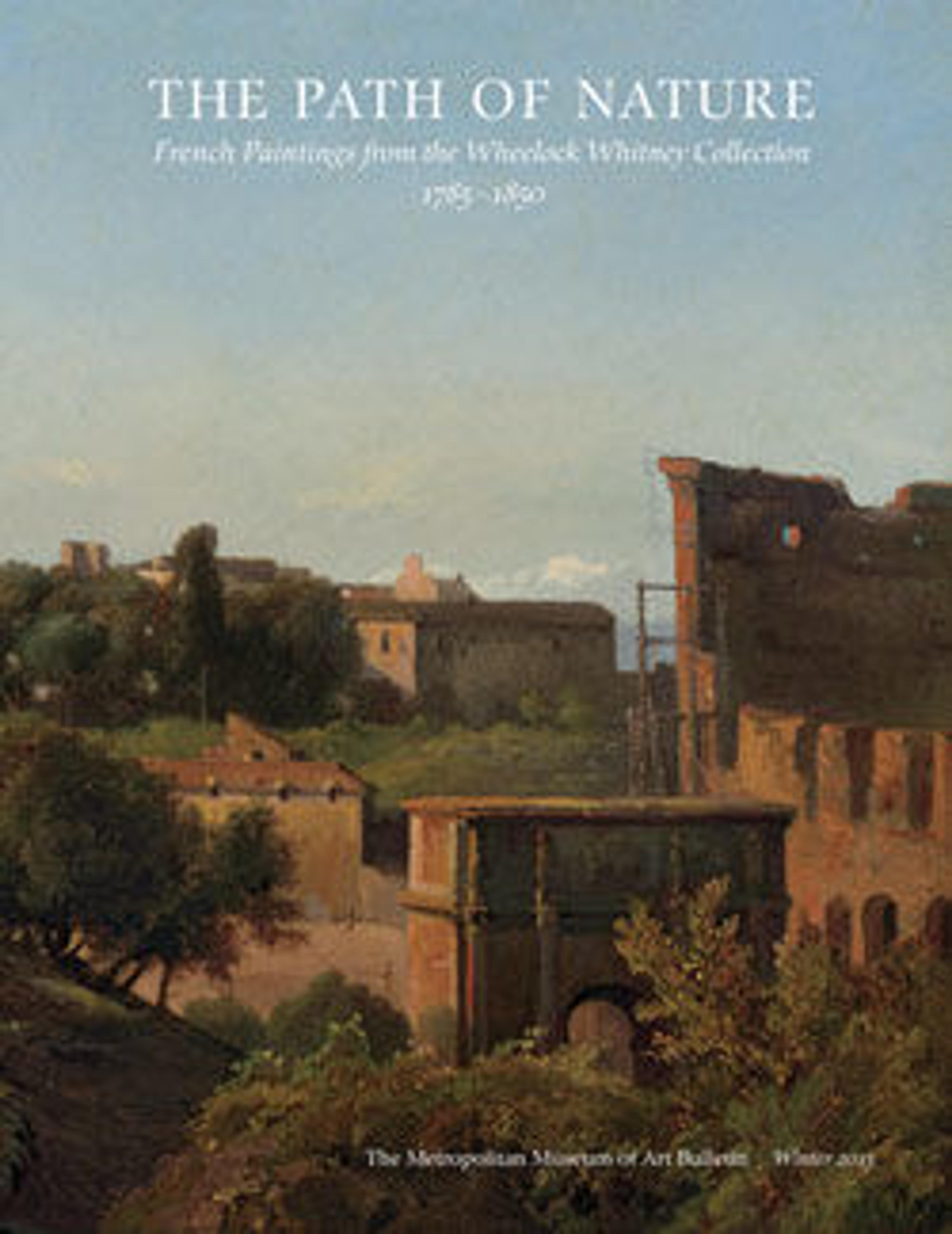View of the Colosseum and the Arch of Constantine from the Palatine
This work straddles the boundary between a sketch and a finished painting. Key monuments are shown as fragments of a compositional whole that is equal parts natural and urban, ancient and modern. In the foreground, the broken contours of a grassy row of arches playfully anticipate the forms of the architecture beyond. This Picturesque device contrasts with the purely functional scaffolding abutting the Colosseum, which was erected by the architect Giuseppe Valadier about 1822–23 to help stabilize the amphitheater’s long-crumbling outer wall.
Artwork Details
- Title: View of the Colosseum and the Arch of Constantine from the Palatine
- Artist: Charles Rémond (French, Paris 1795–1875 Paris)
- Date: ca. 1822–24
- Medium: Oil on paper, laid down on canvas
- Dimensions: 11 1/4 x 15 1/4 in. (28.6 x 38.7 cm)
- Classification: Paintings
- Credit Line: The Whitney Collection, Gift of Wheelock Whitney III, and Purchase, Gift of Mr. and Mrs. Charles S. McVeigh, by exchange, 2003
- Object Number: 2003.42.48
- Curatorial Department: European Paintings
More Artwork
Research Resources
The Met provides unparalleled resources for research and welcomes an international community of students and scholars. The Met's Open Access API is where creators and researchers can connect to the The Met collection. Open Access data and public domain images are available for unrestricted commercial and noncommercial use without permission or fee.
To request images under copyright and other restrictions, please use this Image Request form.
Feedback
We continue to research and examine historical and cultural context for objects in The Met collection. If you have comments or questions about this object record, please complete and submit this form. The Museum looks forward to receiving your comments.
